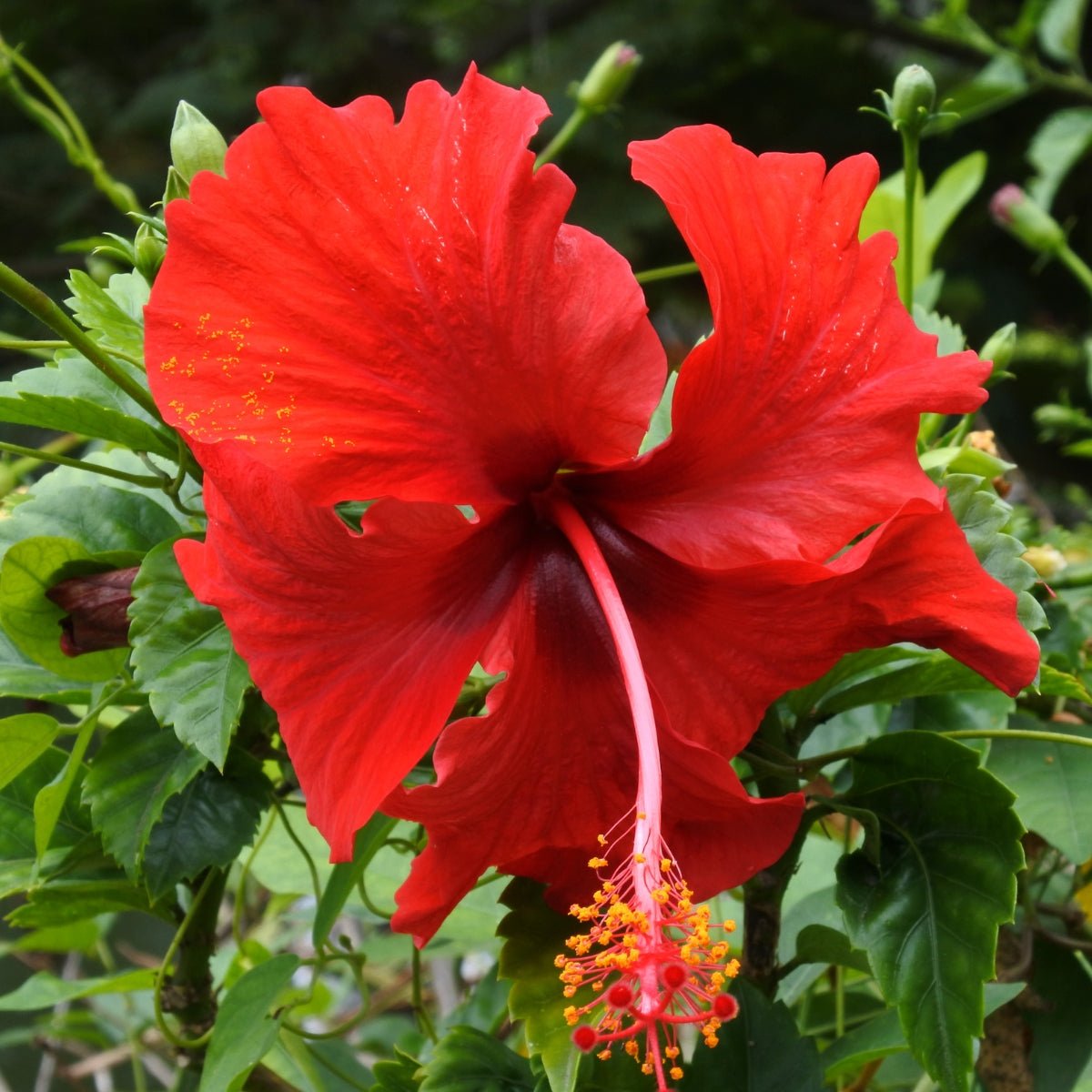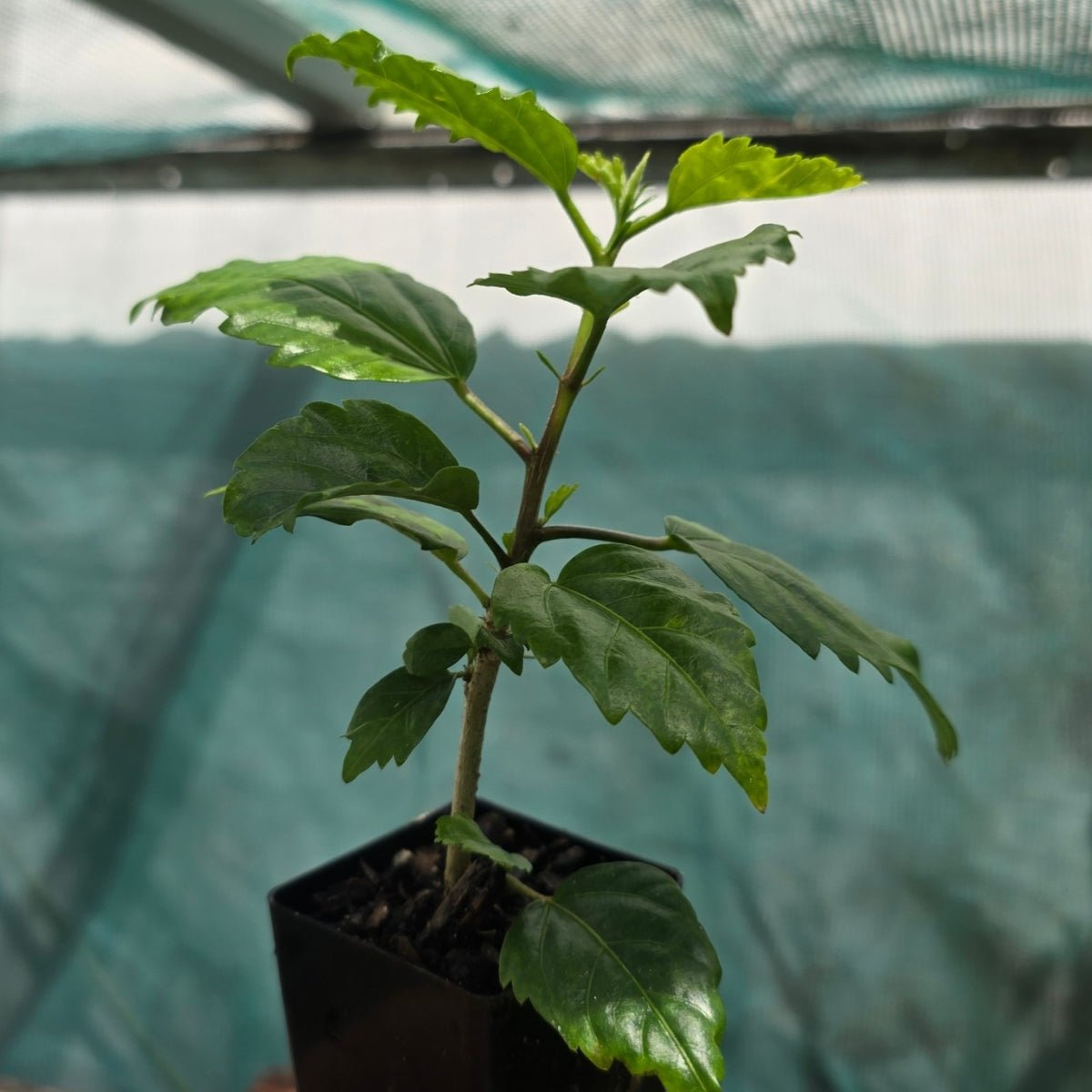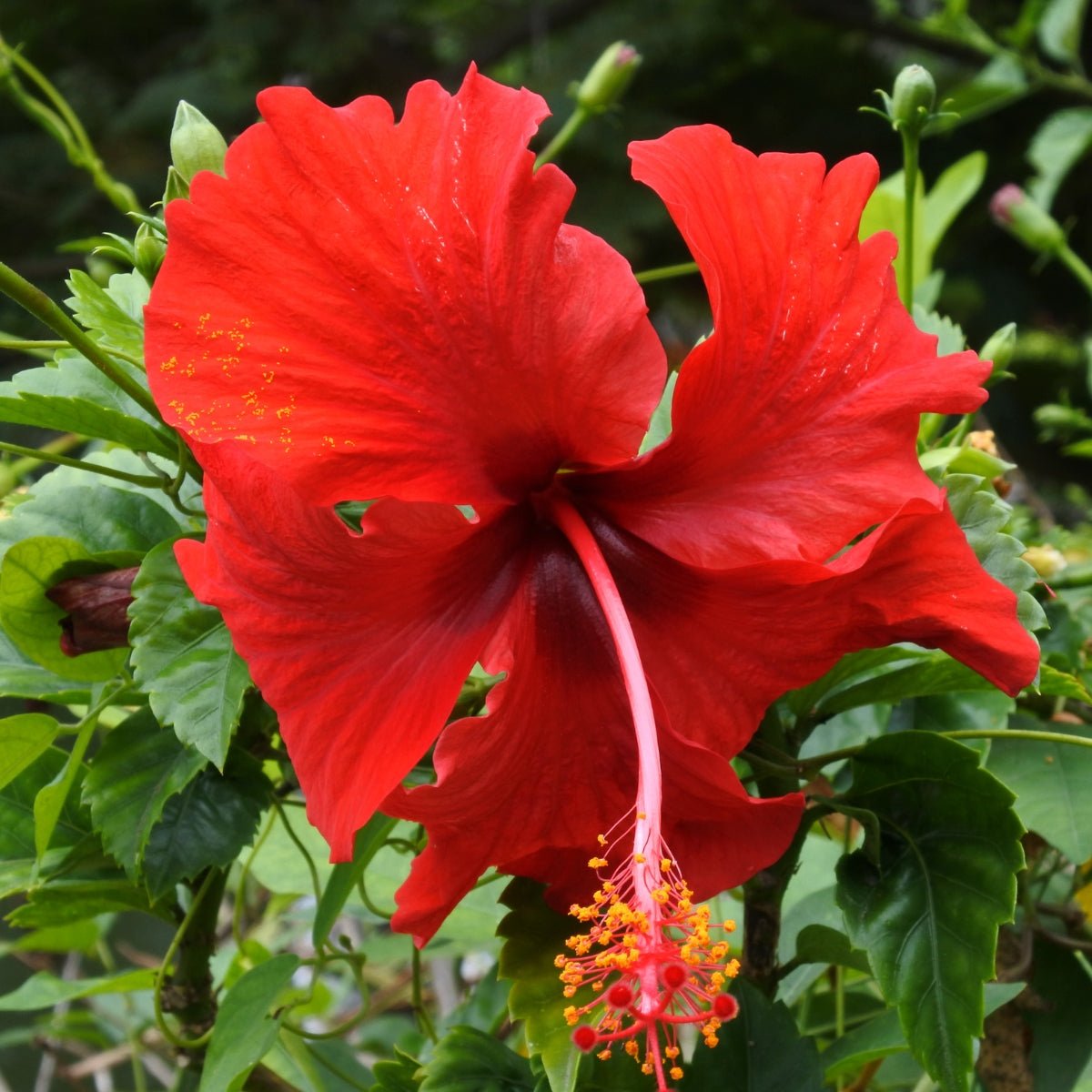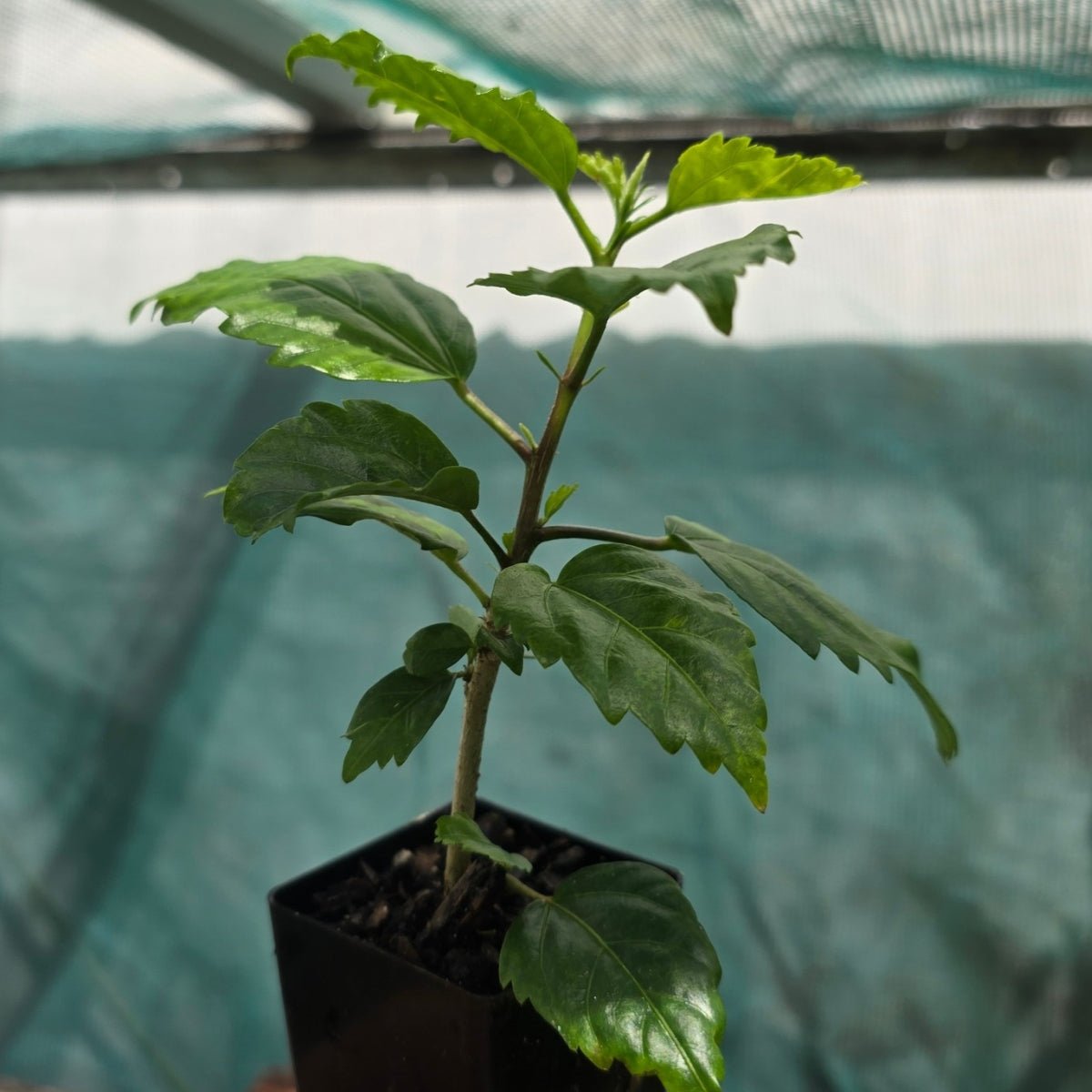

Description
Hibiscus rosa-sinensis 'Psyche' is a striking evergreen shrub admired for its vibrant red, frilly-edged flowers with prominent central stamens. The blooms appear over a long season—from summer into autumn or beyond—making it a stellar addition to any tropical or temperate garden. Glossy dark green leaves provide a dramatic backdrop, enhancing the richness of every flower.
With a growth habit that can be compact or more spreading depending on climate, ‘Psyche’ thrives in sunny, well-drained soil. It does especially well when sheltered from frost and strong wind. Whether used as a specimen plant, informal hedge, or feature in containers, this hibiscus brings bold colour and floral drama to patios, garden beds, or entryways.
(Example Picture Only)
NOT AVAILABLE TO WESTERN AUSTRALIA - Under condition 47 this is a restricted species due to the Hibiscus Erineum Mite/Leaf Crumpling Mite - Aceria hibisci Nalepa.
Supplied in 42mm Pots
✨ Key Features
-
Botanical Name: Hibiscus rosa-sinensis 'Psyche'
-
Bright red, ruffled single flowers with long central stamens
-
Glossy dark green foliage all year in warm or mild climates
-
Long flowering season, especially summer through autumn
-
Grows approx. 1.5-2.0 m tall and wide in favourable conditions
-
Excellent for containers, garden specimen planting, or hedges
-
Prefers full sun to part shade, well-drained soil, and protection from frost
💡 Why You Should Buy
-
Delivers showy, bold color that draws attention in gardens
-
Extended bloom time creates ongoing visual impact
-
Adds tropical elegance with minimal upkeep in suitable climates
-
Versatile usage: pots, hedges, feature beds all work beautifully
-
Great for gardeners who love vibrant, dramatic flowering plants
❓ FAQs
Q: What is the botanical name?
A: Hibiscus rosa-sinensis 'Psyche'.
Q: How large does it grow?
A: Typically 1.5-2.0 meters in height and spread in warm areas. It may be smaller in cooler or more sheltered positions.
Q: Does it need protection from frost?
A: Yes — frost can damage foliage and buds. Best planted in frost-free or protected zones.
Q: How much sunlight does it need?
A: Full sun produces the best, most abundant flowering. It tolerates part shade but might flower less.
Q: How should I care for it?
A: Provide well-drained soil, regular watering during dry periods, occasional pruning after flowering, and feeding with flowering plant fertilizer.
NOT AVAILABLE TO WESTERN AUSTRALIA - Under condition 47 this is a restricted species due to the Hibiscus Erineum Mite/Leaf Crumpling Mite - Aceria hibisci Nalepa.




